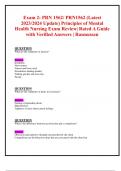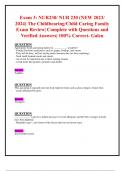Summary
Summary General Chemistry Spark notes on lkali Metals (IA), CHALCOGENS (VIA), Halogens (Group VIIA), Noble Gases (Group VIIIA), Transition Metals and Color Perception
- Module
- Institution
Are you looking to master the essentials of General Chemistry? Our document study guide offers simple, concise notes on key topics that will enhance your understanding and retention. Why Choose Our Study Guide? Focused Content: Dive into the fascinating world of Alkali Metals (IA), Chalcogens...
[Show more]












